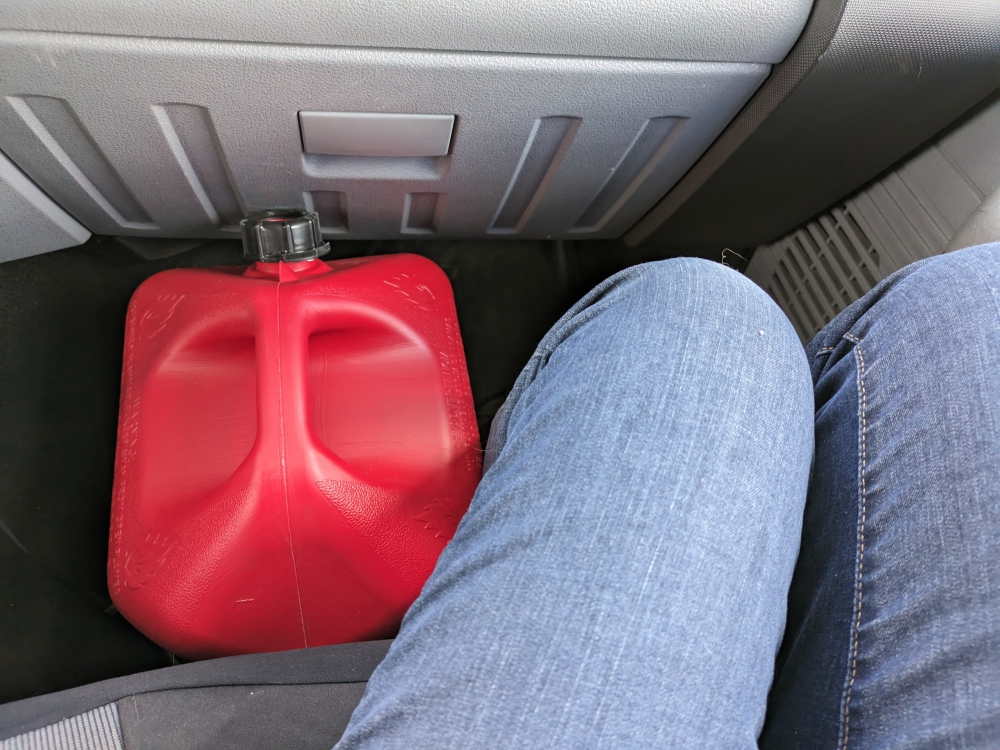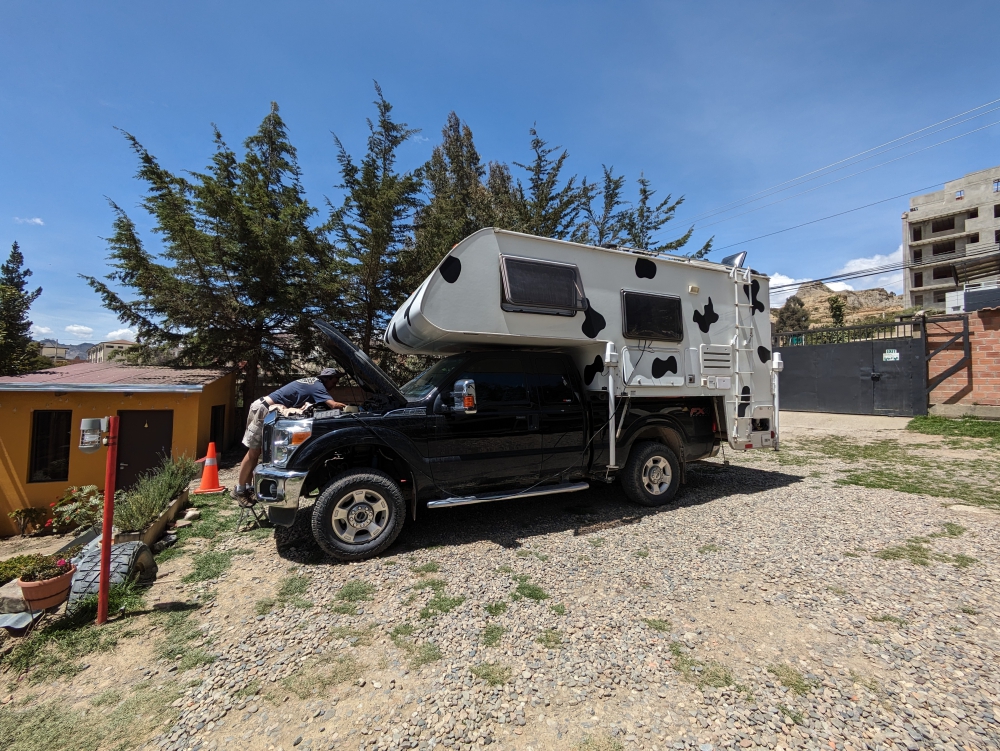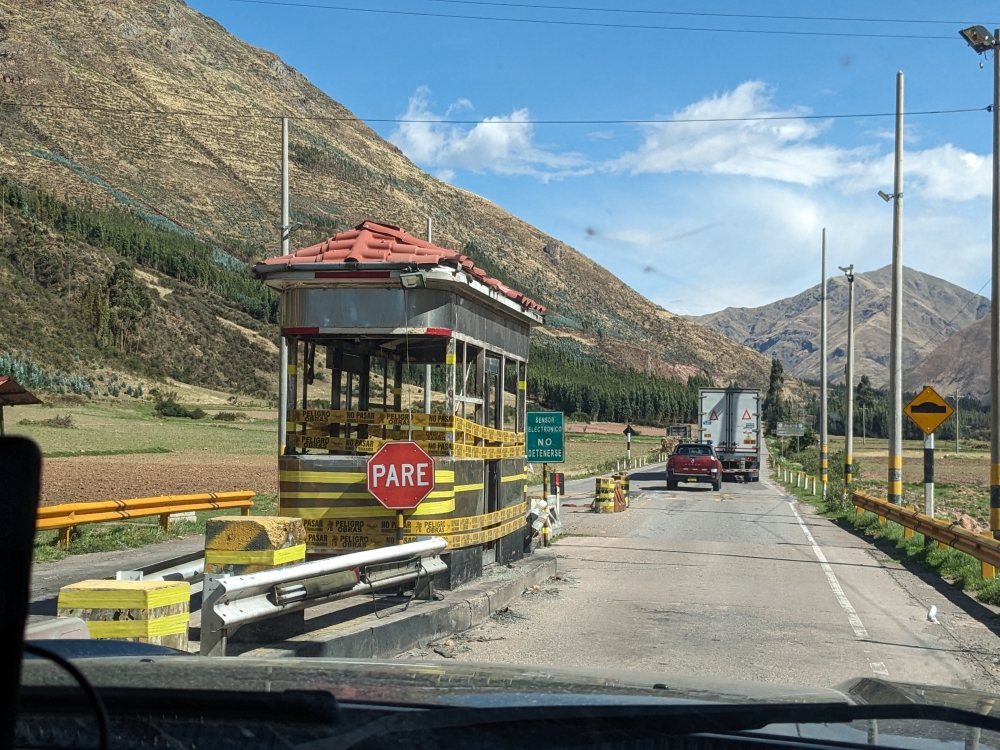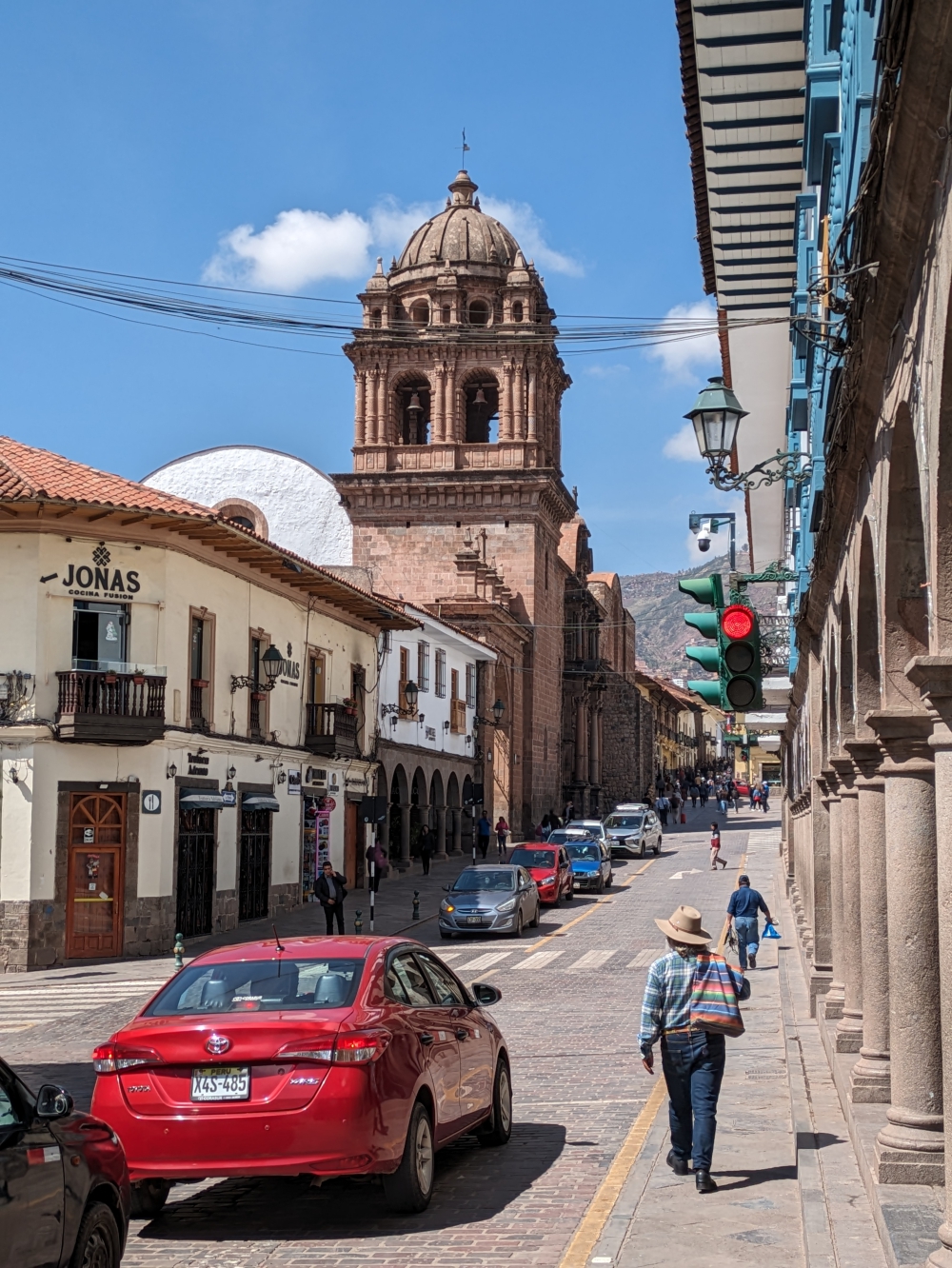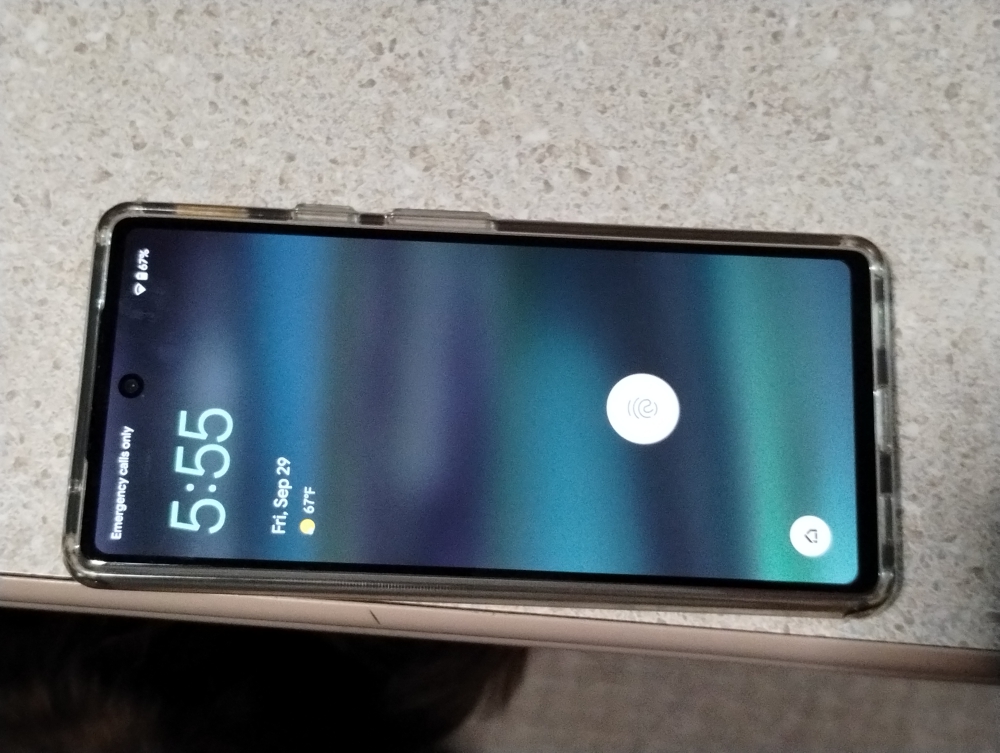
Every month, I post a report of our expenses to show that it is possible to live a comfortable, exciting, and adventurous life without breaking the bank. The less money you spend, the less you need to make. 🙂
This report includes ALL of our expenses, in US$, for two adults and one 60-pound dog (we adopted Maya on June 4th, 2019). Under groceries we incorporate food, produce, and non-alcoholic drinks predominantly bought in supermarkets. Toiletries belong in that category as well. Dining out means eating at a restaurant/event or purchasing take-out food. The health category covers non-prescription medicines and vitamins/supplements; medical contains prescription drugs and doctor’s visits. Because of our income level, Mark and I are eligible for free health care within the state of Massachusetts. For check-ups and extensive care, we return to the US East Coast. Other health issues are resolved locally and out of pocket where needed and possible.
Despite February being the shortest month of the year, it was an expensive one for us. The first week, Mark, Maya, and I finished our time in Bolivia with Thirsty Bella. We explored Northern Chile for the remainder of the month.
As usual, the car category was the highest at $659 (!) – blame the Chilean fuel prices, our desire to get two new tires, and traveling with a dog…
Our Ford F350 pickup truck has terrible fuel economy, especially with the heavy weight of the camper in the back. We manage to drive around 10 miles per gallon; less in the Andes Mountains, more on perfect, paved roads with a tail wind. At over $5 per gallon, gasoline in Chile is pricy, so much so that we often discussed if an attraction would/might be worth the cost of driving that extra distance. I’ll elaborate more on that in a future post.
We were curious about Northern Chile, so made somewhat of a loop in this desolate and not-so-interesting part of the world. While it is always interesting to explore new territory, this detour easily cost us $200 in fuel (most of it bought as a last, tricky fill-up in Bolivia), something we don’t think was worth it.
But, because of this extra distance, we managed to buy two duty-free new tires in the “free zone” of Iquique for a decent price.
Our all-terrain tires didn’t need replacing yet, based on their use and mileage, but after the tire stabbing incident in Colombia eight months ago, we have always been worried about that extensively patched-up front tire, especially on rocky tracks. Plus, Mark didn’t feel comfortable airing down that tire if ever needed. As fate would have it, tire deflation proved necessary mere days after buying the new set. More about that in a future blog post.
We wanted the new tires in the back, so had to find a place that accommodated rotating the wheels and installing the tires, something that was not included in the purchase price. or was available there. After trial and error, we found a set of guys, who swapped the front and back tires and popped two of the new ones on the rims. With two jacks. Three, when the back of the camper appeared too heavy and stalled progress at some point. I kept mumbling under my breath, “This is a disaster waiting to happen,” as two wheels were removed at the same time and the mechanics’ attitude was very relaxed… A stressful hour!
For Chile, we needed to buy additional liability insurance, which was affordable at $11 for six months. The tolls added up to $8, we urgently needed a carwash after our sandy conundrum ($6), and we paid $2 in tips for parking attendants.
The dog category was high for two reasons. We needed to stock up on special dog food for our allergic Maya, which is available – and “cheaper” – in Chile. So, we bought two giant bags of 18kg (40lbs) in Iquique. This should last a while…
Plus, we had to deal with two export permits to prove Maya was in good health. One to cross into Chile from Bolivia and one to drive from Chile into Argentina. The last certificate is valid for a return into Chile within 60 days.
Chile and Argentina are very strict about internal and external parasite treatment for pets when crossing borders. Since we didn’t have the box or the number of Maya’s current Seresto collar, we ended up buying a new one for a steep $66. At least, it should be good for another eight months! And, the vet fee was for follow-up visits in Uyuni, Bolivia, to get her bite wound checked out and her stitches removed.
The grocery cost was average at $271, despite having to restock our fridge and pantry upon entry into Chile, since we’d eaten everything that was prohibited, like meat, fruits, vegetables, eggs, and honey.
Shopping for food can be pricey in this country, but – as always – we constantly look for the best deals, buy generic brands, avoid imported products, pick produce that is affordable, compare prices, and check our receipts. This way, costs remain manageable. No matter whether it is in French Polynesia, the Bahamas, or Chile! 😊
We splurged on entertainment in February as well, with that private tour onto the Salar in Uyuni for $116 and a tip for our guide. The rest of that $150 of fun went to the entrance fee for the ghost town of Humberstone ($13) in Northern Chile and visits to the salt statues and the “island” of Incahuasi on the Salar. Few attractions in Chile are free, so that trend continues into this month!
Mark and I bought affordable wine and extra Flor de Caña and Bacardi in Bolivia and Chile, because friends told us rum was hard to find and expensive in Argentina. The utility category contains half of our monthly subscription fee for Starlink satellite internet (the other half is paid by our business) and potable water. For the first time in six months, we had to pay for our drinking water. This happened in Uyuni, where we transferred six 20-liter (5-gallon) garrafones into our tank with an electric pump.
The miscellaneous category consists of a tip of $20 (and a six-pack of beer) for the Chileans who towed us out of a gnarly situation on the beach in Hornitos. I hate to admit it, but February was another eventful month on the road… And, we had to buy prints and photocopies to have in the car with us for border crossings and police checks. Yup. That cost $5 in Chile.
We hadn’t done laundry since running the campground in La Paz, Bolivia, so there was quite a pile to take care of. After a few failed attempts – the machines at a truck stop were broken and drop-off services took too long or were way out of our budget – we managed to get our loads done within 24 hours at a full-service laundromat in Antofagasta. The price was actually much higher, but somehow, that mistake worked in our advantage.
Mark and I enjoy good food and eating out, but that is not in the cards in Chile. Fortunately, a generous donation by our friends Duwan and Greg allowed us to enjoy a Korean dinner in Iquique. Other than that, we went out for a seafood empanada lunch in Antofagasta.
We managed to eat a lot of awesome meals at home, because the only affordable thing in this country, other than wine, is seafood!
The last and cheapest expenses of February were for transportation (a taxi ride in Iquique after a long walk and picking up the dogfood), more birth control pills in Bolivia, some nuts and bolts for a broken cabinet in Bella, and a shower at a truck stop for $1 each.
We didn’t stay at any campgrounds, but boondocked (wild camped) throughout Southwestern Bolivia and Northern Chile. So, our accommodation was free.
And, that’s a wrap for last month. Not the cheapest one of the year but we obtained some big-ticket items and hope that fuel will get more affordable from now on. Plus, we really ought to start driving less and “sitting” more. 😊
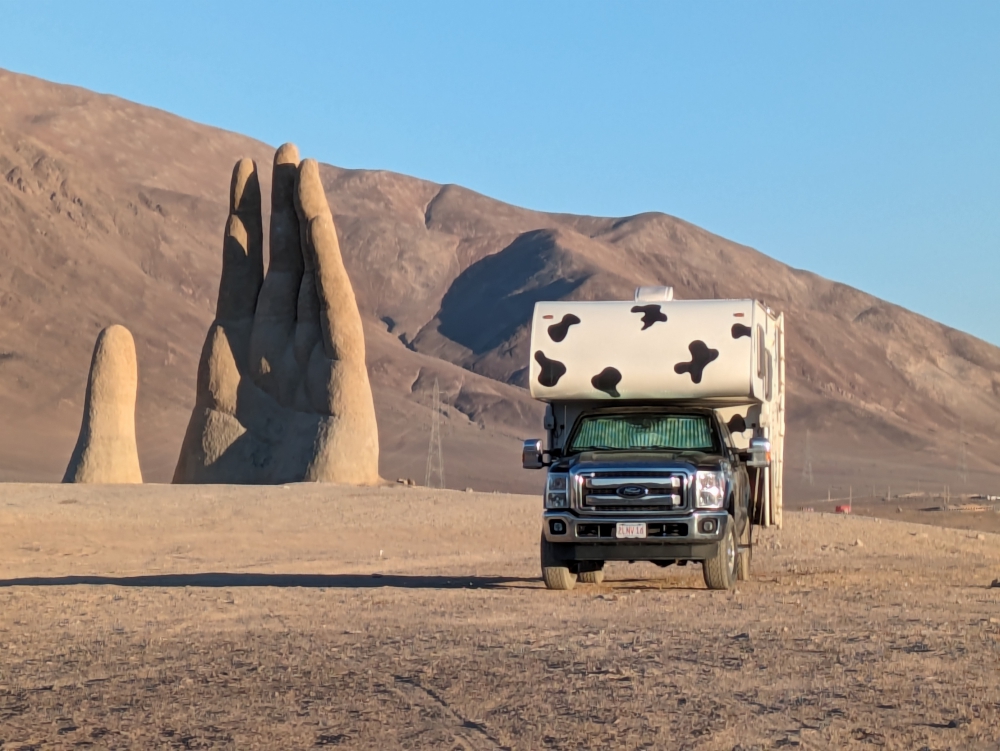
Camped for free by El Mano del Desierto – The Hand in the Desert
February 2024 Overview:
Car (fuel: $377; tires: $261; ins.: $11; tolls: $8; parking: $2):
Dog (food: $176; permits: $93; flea collar: $66; vet:$7):
Groceries:
Entertainment (Salar tour & entrance fees):
Alcohol:
Utilities (Starlink internet: $32; water: $13):
Miscellaneous:
Laundry:
Dining out:
Transportation (Iquique):
Medical (birth control pills):
Camper:
Health & fitness (showers):
Accommodation:
TOTAL:
$659
$342
$271
$150
$84
$45
$25
$16
$10
$5
$4
$2
$2
$0
———
$ 1,615
(It might be easier to read the table when turning your device in the horizontal position.)
Find all our expense reports here. To learn what other full-time nomads spend each month, check out the blogs of our vanlife friends Duwan and Greg at Make Like An Ape Man.
If you are enjoying these posts, please consider donating to Roaming About in support of our website and our lifestyle. A big thank you to all our readers who have helped out in the past!

























































































































